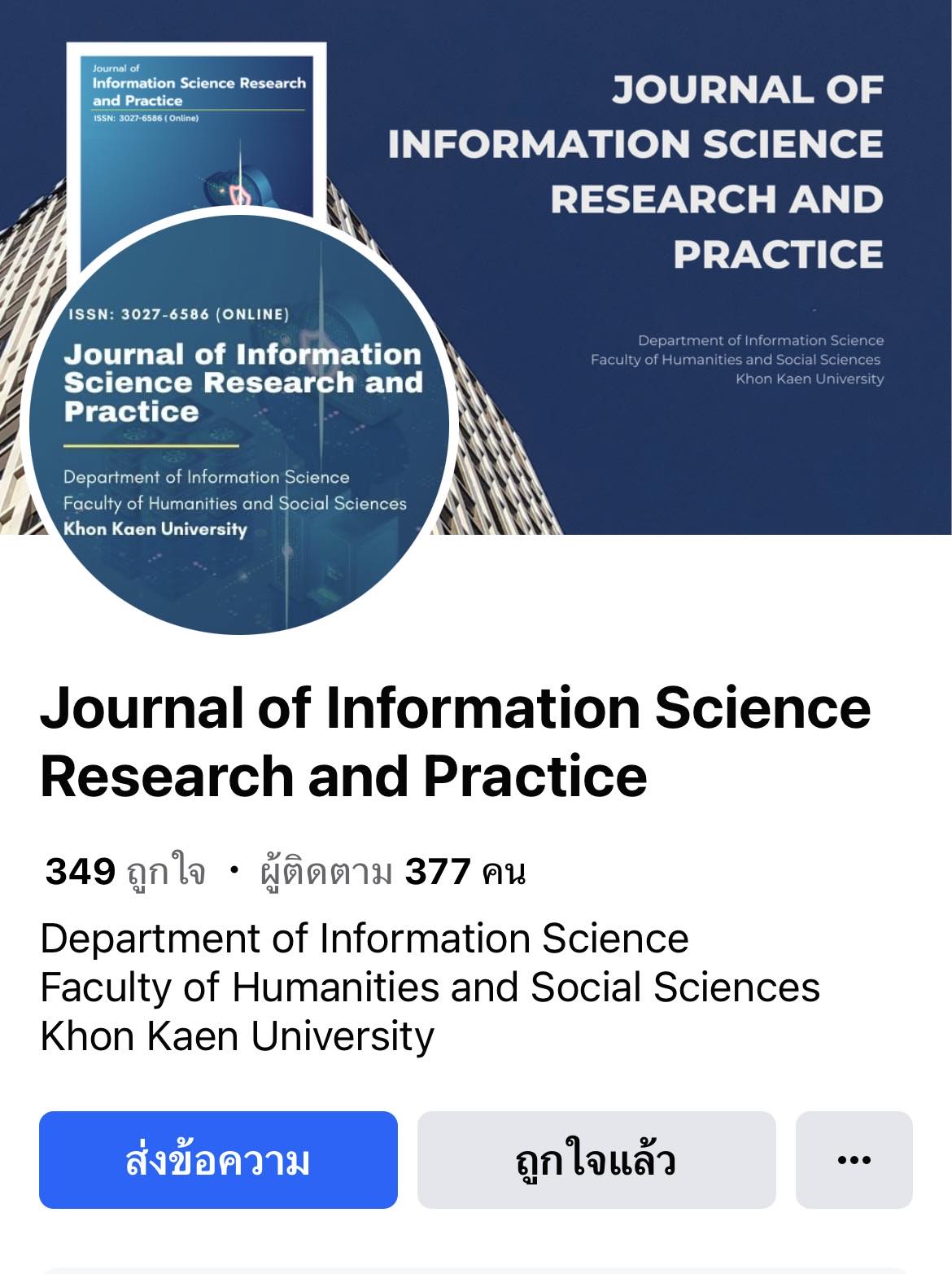The Development of Movie Recommendation System with Graph Data Structure
DOI:
https://doi.org/10.14456/jiskku.2023.30Keywords:
Recommendation system, Graph data structure, Maximum spanning treeAbstract
Purpose: The objective of this research is to design and evaluate the efficiency a movie recommendation process with graph data structure.
Methodology: The MovieLens dataset contains 100,000 records on 1,682 movies from 943 users. There are two parts of the study 1) the recommendation based on movie preference ratings by K - mean clustering method and 2) the recommendation based on a spanning tree of maximum weights in graph data structure by user’s attributions.
Findings: The recommendations for top – 10 movies based on movie preference ratings from 5 user groups by K – mean Clustering. The result has shown that the average recommendation accuracy is 28.16%. In addition to the recommendation for top-10 movies based on graph data structure from 111 user groups by user’s attributions, such as sex, age rage, and occupation found that the average recommendation accuracy is 87.45%.
Applications of this study: The results indicated that the proposed maximum weight spanning tree in graph data structure can recommend movies to watching more efficiently.
Downloads
References
Adomavicius, G., & Kwon, Y. (2007). New recommendation techniques for multicriteria rating systems. IEEE Intelligent Systems, 22(3), 48-55.
Adomavicius, G., Manouselis, N., & Kwon, Y. (2011). Multi-criteria recommender systems. In Recommender systems handbook. Springer, Boston, MA.
Cosley, D., Lam, S. K., Albert, I., Konstan, J. A., & Riedl, J. (2003). Is seeing believing? How recommender system interfaces affect users' opinions. In Proceedings of the SIGCHI conference on Human factors in computing systems, (585-592). New York: Association for Computing Machinery.
Falk, K. (2019). Practical recommender systems. New York: Manning Publications.
Han, S. C., Lim, T., Long, S., Burgstaller, B., & Poon, J. (2021). GLocal-K: Global and Local Kernels for Recommender Systems. In Proceedings of the 30th ACM International Conference on Information & Knowledge Management. (3063-3067). New York: Association for Computing Machinery.
Harper, F. M., & Konstan, J. A. (2015). The MovieLens Datasets: History and Context. ACM Transactions on Interactive Intelligent Systems, 5(4), 1–19.
Ivarsson, J., & Lindgren, M. (2016). Movie recommendations using matrix factorization. Retrieved from https://urn.kb.se/resolve?urn=urn:nbn:se:kth:diva-186400
Kesorn, K. (2021). Data Science System. Phitsanulok: Faculty of Science, Naresuan University.
Kuzelewska, U. (2014). Clustering algorithms in hybrid recommender system on movielens data. Studies in logic, grammar and rhetoric, 37(1), 125-139.
Leng, Y., Ruiz, R., Dong, X., & Pentland, A. S. (2020). Interpretable recommender system with heterogeneous information: A geometric deep learning perspective. International Journal of Mechanical and Production Engineering Research and Development (IJMPERD), 10(3), 2411-2430.
Sarwar, B., Karypis, G., Konstan, J. & Riedl, J. (2001). Item-based collaborative filtering recommendation algorithm. Proceeding of the 10th International World Wide Web Conference, 285-295.
Walek, B., & Fojtik, V. (2020). A hybrid recommender system for recommending relevant movies using an expert system. Expert Systems with Applications, 158, 1-18.
Zhang, M., & Chen, Y. (2020). Inductive matrix completion based on graph neural networks. The International Conference on Learning Representations (ICLR), 1-14.








